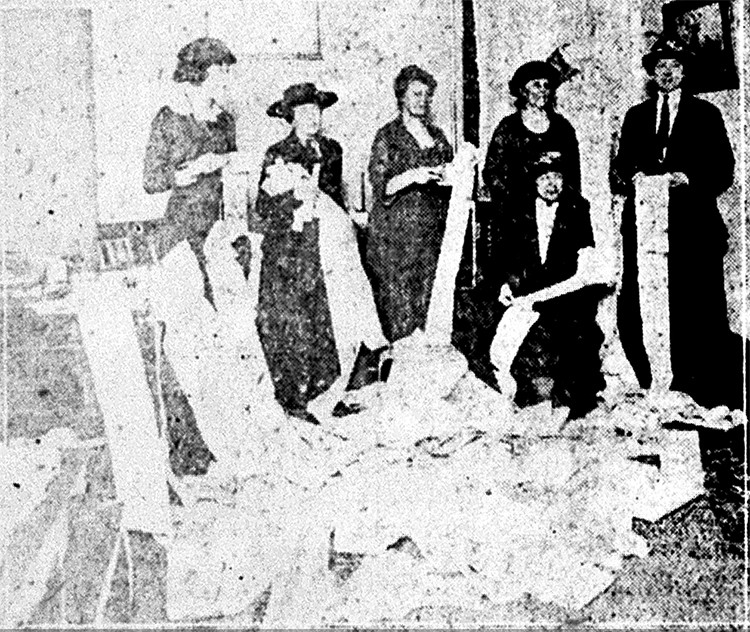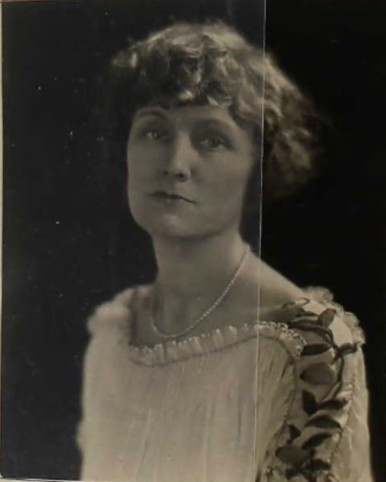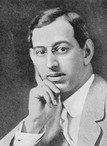West Virginia Ratifies the 19th Amendment, March 10, 1920
Introduction
Text-to-speech Audio
West Virginia’s 1863 state constitution limited the vote to white men (African American men were given the vote with the 15th Amendment, but WV laws largely prevented them from voting). In 1867, state senator Samuel Young attempted to introduce a resolution in favor of women’s suffrage, but it failed. The West Virginia women’s suffrage movement formalized in 1895 with the organization of the West Virginia Equal Suffrage Association (WVESA). The work of the WVESA in tandem with the Women’s Christian Temperance Union created enough support that the House of Delegates passed a women’s suffrage amendment in 1913. It failed to pass the Senate, but when introduced again in 1915 the amendment was passed by both houses of the state legislature. The amendment then went to a statewide referendum in 1916 where it was soundly defeated. Once Congress passed the 19th Amendment in 1919, West Virginia had possibly the most dramatic ratification process. The tension was already high because women needed three more states to ratify the 19th Amendment and it was not clear which way West Virginia would vote.
Images
WVESA Ratification Committee (Henrietta Romine, Cora Ebert, Julia Ruhl, Nancy Mann, Daisy Peadro, and Lenna Lowe Yost) with petitions for ratification. Huntington Advertiser, September 26, 1920

Governor John Cornwell called a special session to ratify the 19th Amendment

"Proclamation from Governor John J. Cornwell calling for a special session to consider several issues including ratification of the 19th amendment."
.jpg)
Lenna Lowe Yost, leading suffragist in West Virginia, led the ratification committee

Julia Ruhl was president of the West Virginia Equal Suffrage Association when the 19th Amendment was ratified
.jpg)
Senator Jesse A. Block cast the decisive vote to ratify the 19th Amendment in West Virginia

Senator Edgar B. Stewart (Monongalia), NWP organizer Mary Dubrow, Senator Jesse Bloch, and NWP worker Betty Gram, The Suffragist, April 1920

"Letter from Carrie Chapman Catt thanking WV State Senator Harvey Harmer for the ratification of the 19th amendment in the state. She also remarked that the story of the 14 senators waiting for the return of Senator Jesse Bloch had captured the attention of people around the world."
.jpg)
Telegram congratulating Lenna Lowe Yost on the ratification of the 19th Amendment.
.jpg)
Backstory and Context
Text-to-speech Audio
West Virginia suffragists had faced severe defeat at the state level in 1916 and the West Virginia Equal Suffrage Association had switched its focus to supporting a national amendment for suffrage. Suffragists led by Julia Ruhl and Lenna Lowe Yost campaigned for ratification.
When the 19th Amendment was passed from Congress to the states for ratification, the West Virginia legislature was not supposed to meet until after the 1920 elections. To ratify the amendment the governor would need to call a special session, but suffragists were initially hesitant to press for that since there had been a special session in 1919 and there was demoralization from 1916. Lenna Lowe Yost worked as the chairman of the ratification committee and she quietly began petitioning politicians to see how much support was there for the amendment and by September 1918 the suffragists felt that there was at least majority support in both the House and Senate.
While West Virginia women were hesitant to put heavy pressure on the governor, the National American Woman Suffrage Association needed West Virginia to address ratification for their larger strategy. Carrie Chapman Catt wrote directly to Governor John Cornwell to encourage him to call a special session for the amendment in early 1920. Support for women’s suffrage was mixed in West Virginia and with the costs of calling a special session, Governor Cornwell was hesitant to call a session only for the 19th Amendment. Cornwell assured Catt that it was likely he would call a special session for another tax issues and he could probably include the amendment in that session. Cornwell called for a special session to begin on February 27, 1920 and dozens of petitions with thousands of signatures started pouring into both houses of the legislature on the matter of suffrage.
The West Virginia state legislature met in special session for 12 days with heavy lobbying from both pro- and anti-suffrage delegations. On March 1, the state senate vote ended in a tie 14-14. Two days later, the House approved ratification 47-40, but the Senate deadlocked at 14-14 again. It appeared that West Virginia was not going to ratify the 19th Amendment, but pro-suffragists contacted state Senator Jesse Bloch who was vacationing in California and was for suffrage. While Republican colleagues kept the special session from adjourning, the national Republican party and private donors arranged for Bloch to travel by train from California to Charleston to cast his vote and break the tie. While Bloch was on his way, more drama unfolded when former senator A.W. Montgomery, who had resigned and moved out of state prior to the session, tried to reclaim his seat in order to break the tie against ratifying the amendment. His attempt failed however due to his official resignation months before. Senator Bloch arrived in Charleston in the early morning of March 10 and later that day cast his vote in favor of ratification, making West Virginia the 34th state to ratify the 19th Amendment.
Sources
Effland, Anne Wallace. “The Woman Suffrage Movement in West Virginia, 1867-1920.” M. A. Thesis, West Virginia University, 1983.
Effland, Anne B. W. "Women's Suffrage." e-WV. The West Virginia Encyclopedia. Accessed July 15, 2021. https://www.wvencyclopedia.org/print/Article/1330.
Pore, Renate. "West Virginia Fails to Pass 1916 Women's Suffrage Referendum." West Virginia Public Broadcasting. September 2, 2020. Accessed July 15, 2021. https://www.wvpublic.org/radio/2020-09-02/west-virginia-fails-to-pass-1916-womens-suffrage-referendum.
Steelhammer, Rick. "Epic rail journey helped WV play key role in suffrage amendment's passage 100 years ago." The Herald-Dispatch. August 26, 2020. Accessed July 15, 2021. https://www.herald-dispatch.com/news/epic-rail-journey-helped-wv-play-key-role-in-suffrage-amendment-s-passage-100-years/article_99026788-afb0-5586-97ed-e8a7f82da81b.html.
"West Virginia and the 19th Amendment." National Park Service. August 22, 2019. Accessed July 15, 2021. https://www.nps.gov/articles/west-virginia-women-s-history.htm.
"West Virginia's Suffrage Movement." West Virginia Archives & History. Accessed July 15, 2021. http://www.wvculture.org/history/archives/women/suffrage.html.
"Chapter Six: Ratification of the 19th Amendment" Fighting the Long Fight: West Virginia Women and the Right to Vote. A West Virginia Archives and History Online Exhibit. Accessed July 15, 2021. http://www.wvculture.org/history/exhibitsonline/suffrage/suffrage6.html.
"Chapter Six: Ratification of the 19th Amendment" Fighting the Long Fight: West Virginia Women and the Right to Vote. A West Virginia Archives and History Online Exhibit. Accessed July 15, 2021. http://www.wvculture.org/history/exhibitsonline/suffrage/suffrage6.html.
"Proclamation by Governor Governor Cornwell for a Special Session." Women's Suffrage in West Virginia. Accessed February 28, 2022. https://wvsuffrage.lib.wvu.edu/home/s/WV-womens-suffrage/item/743.
"Lenna Lowe Yost." Wikipedia. Accessed July 15, 2021. https://en.wikipedia.org/wiki/Lenna_Lowe_Yost.
"Julia Ruhl." Women's Suffrage in West Virginia. Accessed February 28, 2022. https://wvsuffrage.lib.wvu.edu/home/s/WV-womens-suffrage/item/779.
Weiner, Deborah R. "Jesse A. Bloch." e-wv. The West Virginia Encyclopedia. September 26, 2012. Accessed July 15, 2021. http://www.wvencyclopedia.org/articles/551.
"Chapter Six: Ratification of the 19th Amendment" Fighting the Long Fight: West Virginia Women and the Right to Vote. A West Virginia Archives and History Online Exhibit. Accessed July 15, 2021. http://www.wvculture.org/history/exhibitsonline/suffrage/suffrage6.html.
"Letter from Carrie Chapman Catt to State Senator Harvey Harmer." Women's Suffrage in West Virginia. Accessed February 28, 2022. https://wvsuffrage.lib.wvu.edu/home/s/WV-womens-suffrage/item/841.
"Telegram Congratulating Lenna Lowe Yost." Women's Suffrage in West Virginia. Accessed February 28, 2022. https://wvsuffrage.lib.wvu.edu/home/s/WV-womens-suffrage/item/839.
